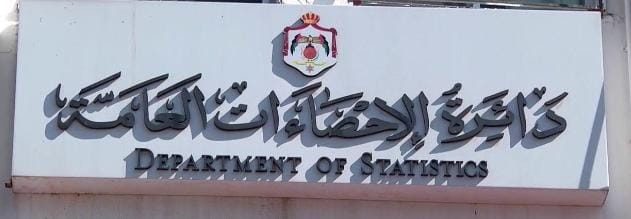- Local News
- Sun-2024-10-27 | 01:26 pm

Nayrouz News Agency :
The national exports saw substantial contributions from six primary industrial sectors, which together accounted for 57.1% of total export value, reaching JD 5.644 billion from January to the end of August this year.
According to data from the Department of Statistics and reported by Jordan News Agency (Petra), the key export products included apparel and accessories, chemical fertilizers, precious jewelry, pharmaceutical products, crude phosphate, and crude potash.
The apparel sector led the list, commanding a 19.5% share of Jordan’s total exports by the end of August, followed by chemical fertilizers, which made up 10.8%.
Jordan’s apparel exports experienced a 22.0% increase, totaling JD 1.099 billion, up from JD 901 million during the same period last year. Pharmaceuticals also marked an impressive growth, rising by 16.0% to reach JD 376 million compared to JD 324 million over the same period in 2022.
In contrast, several other key exports saw declines. Chemical fertilizers fell by 14.6% to JD 610 million, down from JD 714 million last year, while jewelry exports dropped 14.1% to JD 480 million from JD 559 million.
Exports of crude potash and phosphate also saw reductions, with potash exports decreasing 32.3% to JD 318 million, down from JD 470 million, and phosphate exports dropping by 16.0% to JD 341 million compared to JD 406 million in 2022.
Despite mixed performance across sectors, the rise in overall exports helped narrow Jordan’s trade deficit by 1.0% over the same period, bringing it to JD 6.229 billion. The growth in apparel and pharmaceuticals played a central role in this improvement.
The term "national exports" encompasses goods and services produced domestically for export, signifying Jordan’s economic contributions in various sectors across international markets.
According to data from the Department of Statistics and reported by Jordan News Agency (Petra), the key export products included apparel and accessories, chemical fertilizers, precious jewelry, pharmaceutical products, crude phosphate, and crude potash.
The apparel sector led the list, commanding a 19.5% share of Jordan’s total exports by the end of August, followed by chemical fertilizers, which made up 10.8%.
Jordan’s apparel exports experienced a 22.0% increase, totaling JD 1.099 billion, up from JD 901 million during the same period last year. Pharmaceuticals also marked an impressive growth, rising by 16.0% to reach JD 376 million compared to JD 324 million over the same period in 2022.
In contrast, several other key exports saw declines. Chemical fertilizers fell by 14.6% to JD 610 million, down from JD 714 million last year, while jewelry exports dropped 14.1% to JD 480 million from JD 559 million.
Exports of crude potash and phosphate also saw reductions, with potash exports decreasing 32.3% to JD 318 million, down from JD 470 million, and phosphate exports dropping by 16.0% to JD 341 million compared to JD 406 million in 2022.
Despite mixed performance across sectors, the rise in overall exports helped narrow Jordan’s trade deficit by 1.0% over the same period, bringing it to JD 6.229 billion. The growth in apparel and pharmaceuticals played a central role in this improvement.
The term "national exports" encompasses goods and services produced domestically for export, signifying Jordan’s economic contributions in various sectors across international markets.








